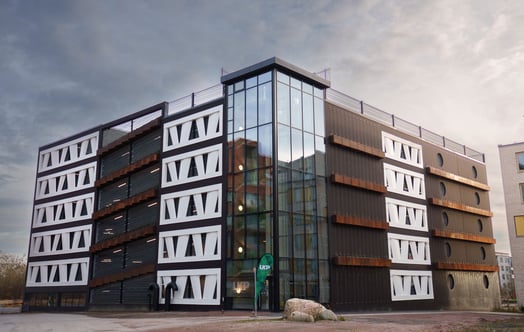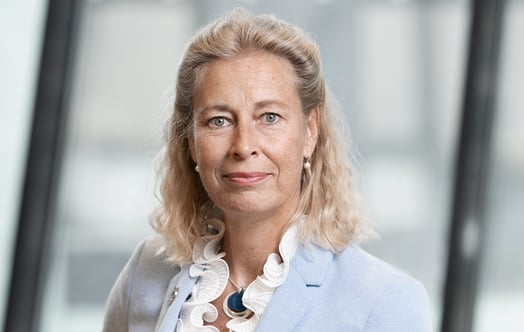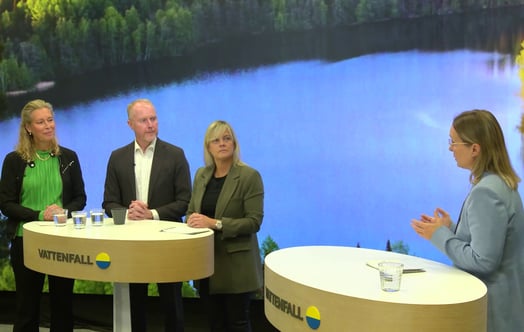
SSAB, LKAB and Vattenfall ready to step up work to achieve fossil-free steel production
SSAB, together with LKAB and Vattenfall, is ready to step up work to achieve fossil-free steel production and to move up the construction of the HYBRIT demonstration plant by three years, write the companies’ three CEOs in an opinion piece published today in the Swedish daily newspaper Dagens Nyheter. The opinion piece comes just ahead of the United Nations (UN) Climate Action Summit, taking place in New York later this month.

Jan Moström, President and CEO, LKAB, Magnus Hall, President and CEO, Vattenfall, Martin Lindqvist, President and CEO, SSAB
“Now, as the UN gathers for a new climate summit in New York on September 23, we are ready to step up our work for fossil-free steel production and to move up plans to reduce carbon dioxide emissions. We are ready to increase efforts from our side, but if we are to achieve success, society and lawmakers must do the same,” wrote Martin Lindqvist, President and CEO, SSAB, Jan Moström, President and CEO, LKAB, and Magnus Hall, President and CEO, Vattenfall, in the opinion piece.
“We are already looking into the possibility of building a demonstration plant in 2025, three years ahead of plan, so that we can immediately thereafter produce iron ore-based, fossil-free steel for commercial use. The goal is to be selling fossil-free produced steel on a broad scale by 2035,” they wrote.
The three companies highlighted four important preconditions for this rapid transition to succeed:
- 1. We need large volumes of fossil-free electricity. According to our calculations, the transition to HYBRIT requires the equivalent of about 10 percent of Sweden’s current electricity consumption. There will also be demand for electricity from other companies and consumers. We will need continued good access to fossil-free electricity with a high level of delivery reliability, competitive pricing and initiatives to create greater flexibility, e.g. through opportunities to store energy. This work must not be delayed. We are prepared to assist in these efforts.
- 2. The public sector in Sweden must get involved and share the risk. Investing in groundbreaking technology such as HYBRIT is often risky, time-consuming and associated with major investments. At the same time, the projects bring great social benefit in the form of increased research, competence and opportunities to achieve climate goals. The Swedish government’s proposal to double the Industrial Evolution initiative over three years is good, but it needs to be secured for a long time to come. A fund is also needed at the EU level, and there may also be a need for support in being able to write off and scrap old plants (so-called stranded assets) in favor of new, sustainable technology.
- 3. As a society, we cannot afford to keep emitting greenhouse gases. The EU trading system for emission allowances is currently being revised, and as a result, the costs of carbon dioxide emissions are rising. The system should be designed from 2020 to benefit the most climate-efficient methods from quarrying in the rock to finished steel. The system needs to be developed even after the upcoming trading period. Sweden and the rest of the EU also need to strive to change other parts of the world ahead of similar systems. Bold, sustainable solutions must not be prevented because parts of the world have a lower level of ambition and therefore carry on using old technology.
- 4. Effective, appropriate permit testing in Sweden is required so that work on the transition is not significantly delayed or stopped completely, not least so that sufficient electricity can be obtained now that we have the opportunity to move up the demonstration phase. It can sometimes take 10 years to obtain an environmental permit or a concession to lay an electrical cable or to upgrade the grid. The Swedish government is planning some measures, but more work is needed.
“Steel is an amazing material. It builds communities, is hard-wearing and can in principle be recycled an infinite number of times,” wrote the CEOs in the opinion piece. “But recycled steel will not be enough. In line with social development, population growth and increasingly higher standards of living all over the world, demand will increase for new steel made from iron ore. Therefore, sustainable solutions are needed. Solutions that contribute not just to solving climate change, but to social development. This should be Sweden’s contribution to the UN climate summit in New York.”



